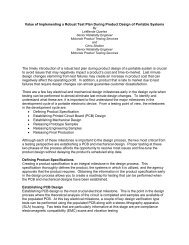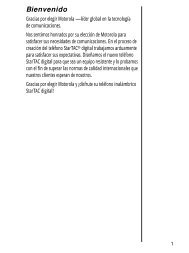T193 - Telefonguru
T193 - Telefonguru
T193 - Telefonguru
Create successful ePaper yourself
Turn your PDF publications into a flip-book with our unique Google optimized e-Paper software.
of mobile phones are of concern because of the short distance<br />
between the phone's antenna—the primary source of the RF—<br />
and the person's head. The exposure to RF from mobile phones<br />
in which the antenna is located at greater distances from the<br />
user (on the outside of a car, for example) is drastically lower<br />
than that from hand-held phones, because a person's RF<br />
exposure decreases rapidly with distance from the source. The<br />
safety of so-called “cordless phones,” which have a base unit<br />
connected to the telephone wiring in a house and which<br />
operate at far lower power levels and frequencies, has not been<br />
questioned.<br />
How much evidence is there that hand-held<br />
mobile phones might be harmful?<br />
Briefly, there is not enough evidence to know for sure, either<br />
way; however, research efforts are on-going. The existing<br />
scientific evidence is conflicting and many of the studies that<br />
have been done to date have suffered from flaws in their<br />
research methods. Animal experiments investigating the effects<br />
of RF exposures characteristic of mobile phones have yielded<br />
conflicting results. A few animal studies, however, have<br />
suggested that low levels of RF could accelerate the<br />
development of cancer in laboratory animals. In one study, mice<br />
genetically altered to be predisposed to developing one type of<br />
cancer developed more than twice as many such cancers when<br />
they were exposed to RF energy compared to controls. There is<br />
much uncertainty among scientists about whether results<br />
obtained from animal studies apply to the use of mobile phones.<br />
First, it is uncertain how to apply the results obtained in rats and<br />
mice to humans. Second, many of the studies that showed<br />
increased tumor development used animals that had already<br />
been treated with cancer-causing chemicals, and other studies<br />
exposed the animals to the RF virtually continuously—up to 22<br />
hours per day.<br />
For the past five years in the United States, the mobile phone<br />
industry has supported research into the safety of mobile<br />
phones. This research has resulted in two findings in particular<br />
that merit additional study:<br />
a In a hospital-based, case-control study, researchers looked<br />
for an association between mobile phone use and either<br />
17 add’l safety info<br />
49










